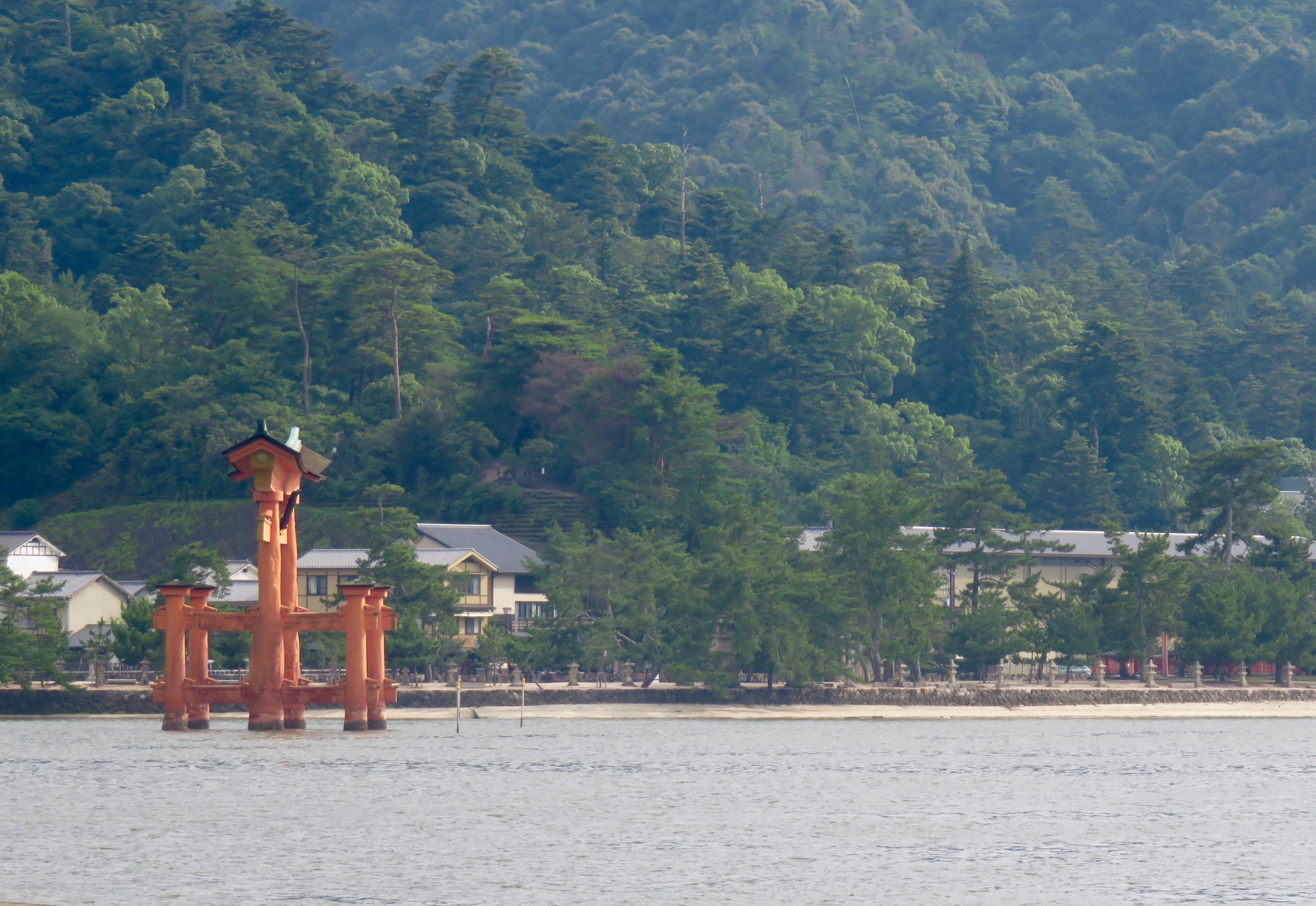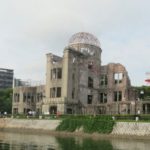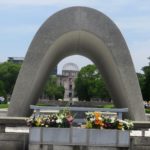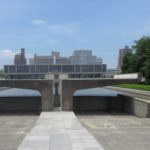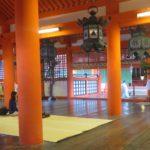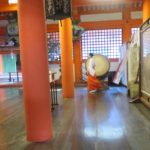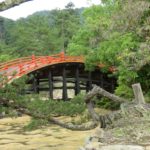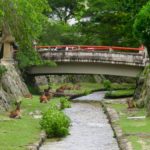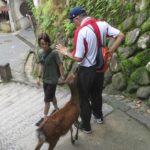Hiroshima is not the first destination of most visitors to Japan. The city itself is mostly, but as you will see not entirely, an unrelenting medley of not especially appealing buildings. These were mostly erected in the 1950s and 60s as the city recovered from the atomic devastation of August 6, 1945 (8:15 am local time, as the stopped watch of a man on his way to work reminds us when you visit the Hiroshima Peace Memorial Museum). But its place in history is assured by that tragic event and the Museum, the park in which it resides and, at the other end of the park, the poignant remains of what is now know as the Atomic Bomb Dome.
We spent a couple of days in Hiroshima with Toby, Kyle and Griffen. It was not our first visit to the city – we had first been there in 2010 – and we were glad to be there again. Because it turns out that there is indeed more to Hiroshima than the bomb. Certainly, the Museum is unsparing in its depiction of the horrors of atomic warfare. Yet, unlike the presenters of the Yushukan War Memorial Museum in Tokyo, whose revisionist view of the war is controversial among Japanese and rejected almost everywhere else, it offers no judgments on the war or what led to the American decision, for good or ill, to drop the bomb. At least at the peace museum, you will not see the kind of detailed discussion of that decision that you can find elsewhere, starting with the Wikipedia entry about the debate. Instead, the focus is on the devastation, the loss of life and limb and the deep desire that atomic weapons be expunged from the earth. Is that enough? For that, we refer you to David Karlin’s blog posting after he visited Hiroshima earlier this year and Michael’s response.
Beyond the Museum and the Park, the city itself offers almost no reminders of what happened. A subtle note in the one pager about the history of the glorious 17th century Shukkeien Garden notes that the garden was destroyed by the bomb but reconstructed. The nearby Hiroshima Castle and its fascinating museum were also entirely reconstructed based on the original plans but again, no emphasis is placed on the destruction of the original.
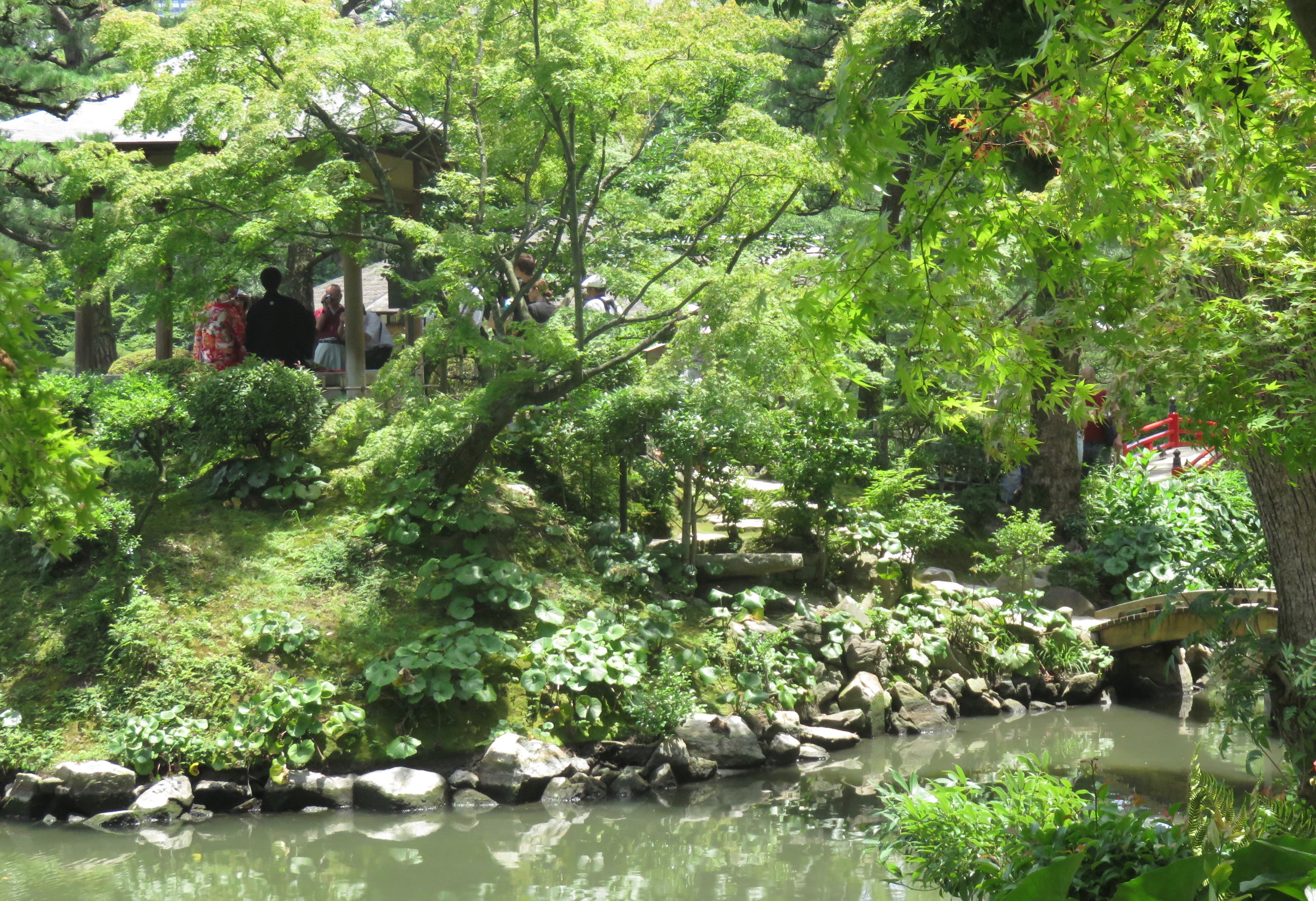
In part, we think, this is due to the fact that Japan has endured so much destruction over the course of history. Wars, of course, until the Tokugawa shogunate brought two and a half centuries of peace starting at the beginning of the 17th century. But also fires, which plagued Japan, a country where most of the buildings were made of wood. And the earthquakes, less frequent, but ubiquitous and tremendously devastating.
Now, however, Hiroshima stands as a peaceful bastion of modernity and 45 minutes away by various means is the glorious island of Miyajima. Famous for its floating torii (the red orange gate you see at the top of this page), it is home to the beautiful Itsukushima shrine, where we ran across a low-key marriage blessing, and a nearby stage where the Noh plays were performed beginning in the late 16th century. It is also home to a large number of peaceful but quite human-acclimated deer, whose lives alternate between lounging and scrounging.
Food in Hiroshima, as everywhere in Japan, is wonderful and varied. We had, for example, a truly delicious meal at a riverside Italian restaurant. However, the local dish, par excellence, is okonomiyaki, which unlike, say, bouillabaisse, has stayed true to its roots as inexpensive left over food. Okonomiyaki, which in restaurants is usually served on a teppanyaki (hot plate – think Benihana), is essentially a pancake with shredded cabbage and anything else that happens to be in the kitchen, often topped with a delicious plum sauce. Oysters are a particularly popular ingredient in Hiroshima but as you can see, spring onions, pork, and lots of other things can make it in. And vast as the pancakes may seem, somehow the leftovers were pretty scarce.
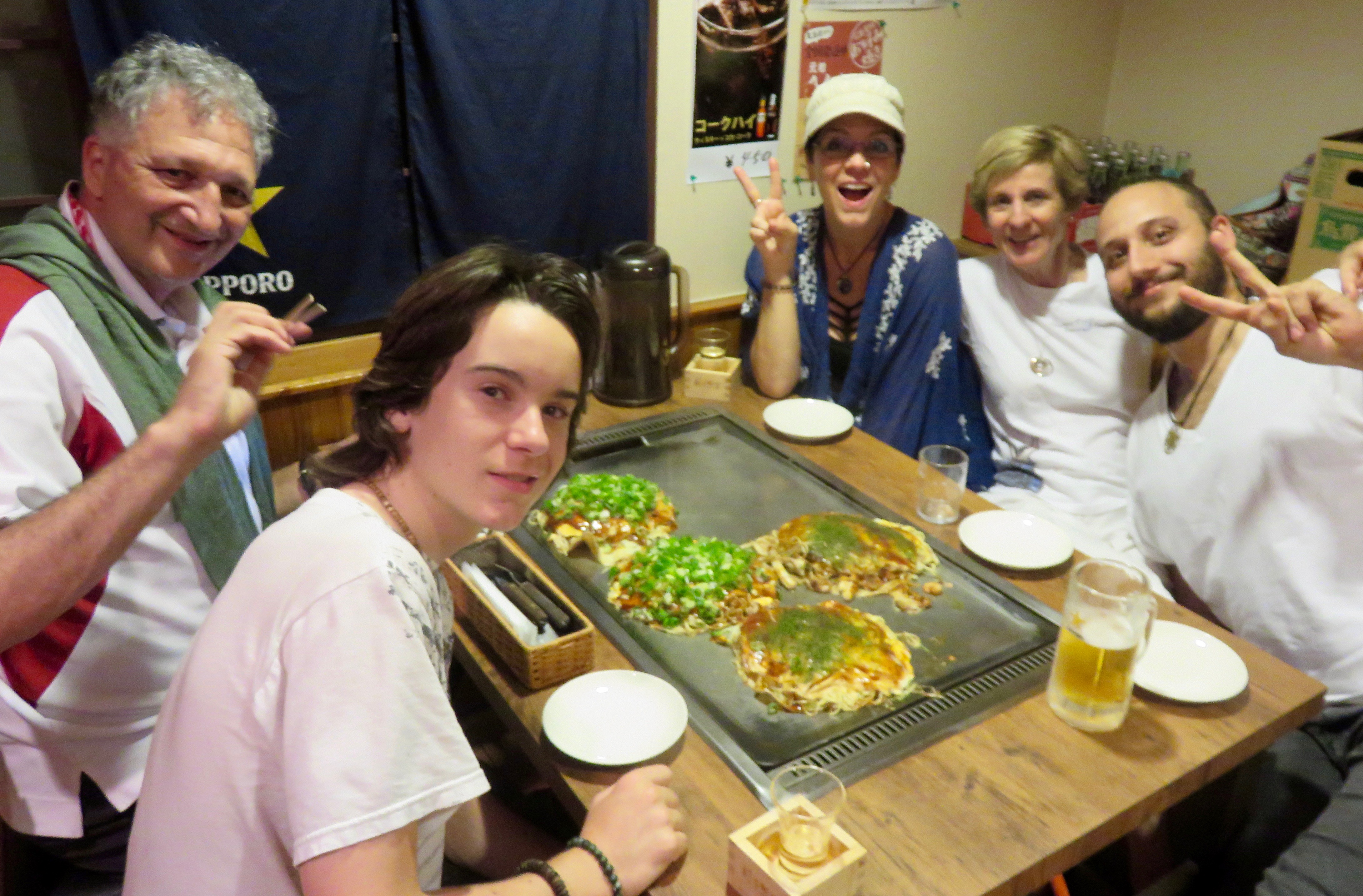
The takeout version (or should we say, the home delivery by scooter version) is just as good (here at the home of Michael’s university classmate David Paul and his wife Yumi). Fiona likes to take these picture pre-devouring but you will have to take our word that not much was left after we got done.
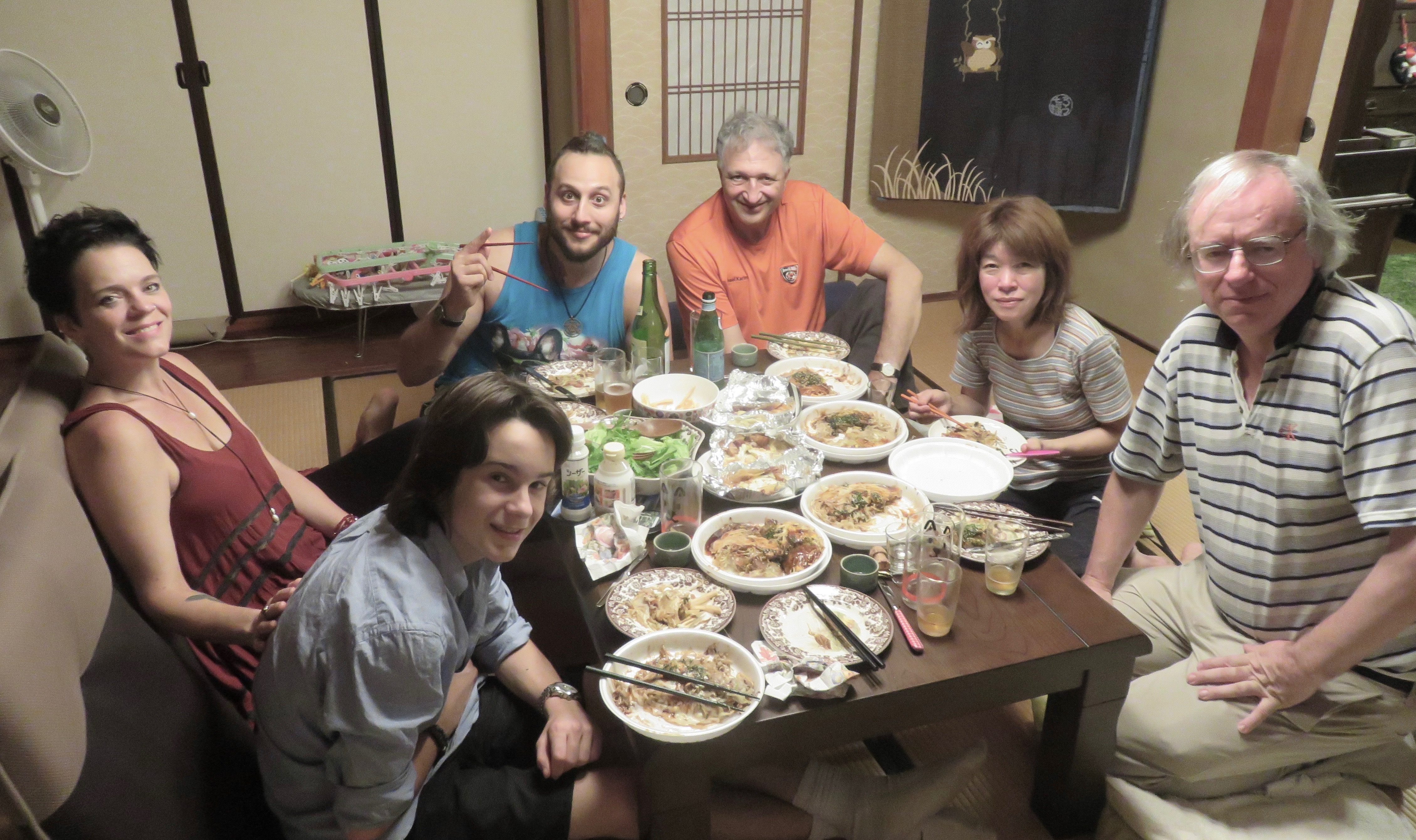
The Japanese for I’m full is お腹いっぱい (onaka ippai). Indeed . . .
